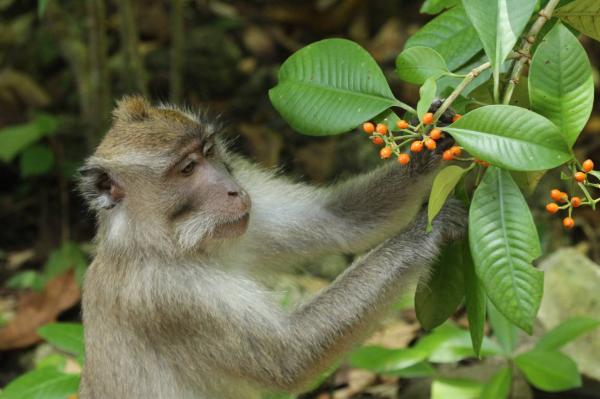



|
TOPICS BONOBO Chimpanzee "Ai" Crania photos Itani Jun'ichiro archives Open datasets for behavioral analysis Guidelines for Care and Use of Nonhuman Primates(pdf) Study material catalogue/database Guideline for field research of non-human primates 2019(pdf) Primate Genome DB 
Primate Research Institute, Kyoto University Copyright (c) |
Japanese Macaques as Seed Dispersal Agents in Asian Forests: A Review
Yamato Tsuji and Hsiu-Hui Su
Abstract
The role of primates in seed dispersal is well recognized. Macaques (Macaca spp.) are major primate seed dispersers in Asia, and recent studies have revealed their role as seed dispersal agents in this region. Here, we review present knowledge of the traits that define the role of macaques as seed dispersers. The size of seeds in fruit influences whether macaques swallow (0.5-17.1 mm; median: 3.0), spit (1-37 mm; median: 7.6), or drop (8.2-57.7 mm; median: 20.5) them. Dispersal distances via defecation are several hundreds of meters (median: 259 m, range: 0-1300 m), shorter than those achieved by some mammals and birds in tropical and temperate regions. However, macaques disperse seeds by defecation at comparable distances to omnivorous carnivores, and further than passerines. Seed dispersal distance by spitting is much shorter (median: 20 m, range: 0-405 m) than by defecation. Among Asian primates, seed dispersal distances resulting from macaque defecation are shorter than those for gibbons and longer than those for langurs. The effects of seed ingestion on the percentage and speed of germination vary among both plant and macaque species. The degree of frugivory, fruit/seed handling methods, seed dispersal distance, microhabitats of dispersed seeds, and effects of dispersal on seed germination vary seasonally and interannually, and long-term studies of the ecological role of macaques are needed. Researchers have begun to assess the effectiveness of seed dispersal by macaques, secondary dispersal of seeds originally dispersed by macaques, and the effects of provisioning on seed dispersal. Future studies should also test the effects of social factors (such as age and rank), which have received little attention in studies of seed dispersal.  A long-tailed macaque (Macaca fascicularis)eating fruits of Psychotria viridiflora
Bibliographic information
International Journal of Primatology, DOI10.1007/s10764-018-0045-7 2018/06/18 Primate Research Institute
|